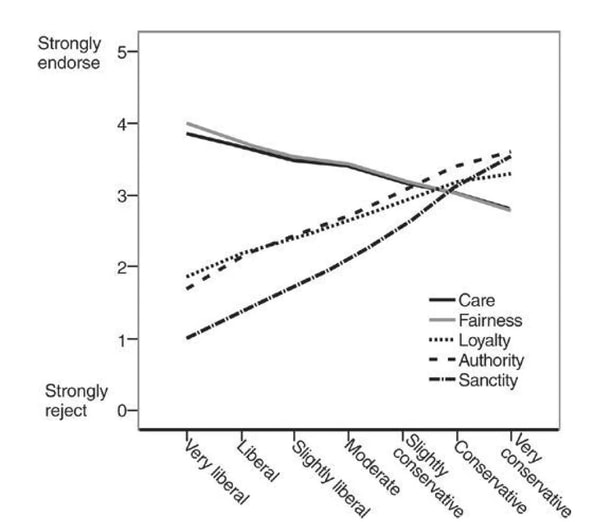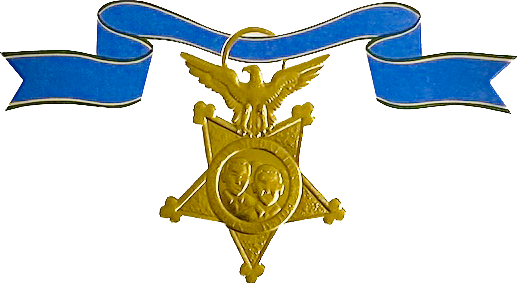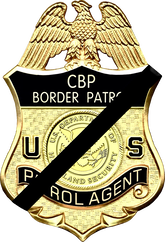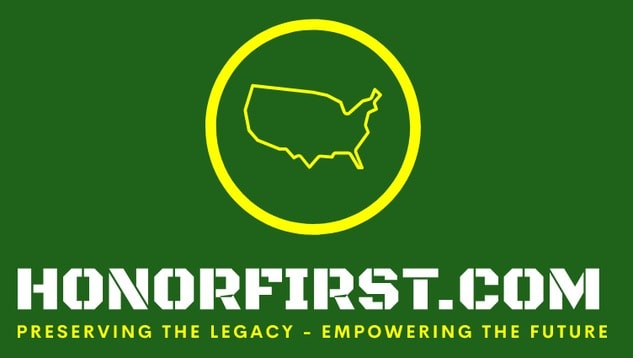January 28 - February 3INTROGood morning! Welcome to another This Week in USBP History! Bridging Divides Understanding Diverse Viewpoints in the USBP Community Introduction: In our daily roles within the United States Border Patrol (USBP), we encounter a spectrum of beliefs and opinions, reflecting the diverse society we serve. This week's blog shifts focus from our usual topics to address a vital aspect of our work and community: understanding and respecting diverse viewpoints. Our aim is to enhance the morale and organizational pride of the USBP workforce by exploring how different perspectives, rooted in varied moral foundations, shape our understanding of complex issues. Utilizing the Moral Foundations Theory, we'll delve into why people with different backgrounds may view the same situation differently and how this understanding can foster unity and respect within our ranks. As we discuss this topic, let's remember the strength of our community lies in our collective ability to listen, understand, and respect the diverse viewpoints of our colleagues. It's this diversity that not only challenges us but also unites us in our shared mission and values as members of the USBP. Exploring Moral Foundations Theory - A Brief Overview In our effort to understand diverse viewpoints, the Moral Foundations Theory offers a useful lens. This theory, proposed by Jonathan Haidt and Craig Joseph, suggests our moral judgments stem from five key foundations:
 The graph from Bas Wallet's Medium article "A moral divide: why progressives and conservatives don’t get each other" depicts how various political groups, from 'Very Conservative' to 'Very Liberal', prioritize different moral foundations: Care, Fairness, Loyalty, Authority, and Sanctity. Each foundation is rated from 'Strongly Reject' (1) to 'Strongly Endorse' (5). Conservatives show a higher preference for Loyalty, Authority, and Sanctity, while Liberals emphasize Care and Fairness more. This illustrates that the moral differences between political ideologies lie not in the values themselves, but in the degree of emphasis placed on these shared moral foundations. Strengths and Limitations:
For a deeper dive into this theory, Jonathan Haidt's book, "The Righteous Mind," is an excellent resource. It's important to remember that while this framework helps us understand different moral perspectives, it's not exhaustive. Moral reasoning is complex and influenced by various factors, including personal experiences and cultural backgrounds. Examining Diverse Viewpoints in the USBP Context In this section, we apply the Moral Foundations Theory to scenarios that are particularly relevant to the USBP community. These examples illustrate how different moral lenses can lead to varied interpretations of the same events or policies. Democratic vs. Republican Approaches to Immigration
Texas Border Barriers and Federal Intervention
Releasing Illegal Entrants Due to Lack of Detention Space
These examples demonstrate how different moral foundations, influenced by constitutional interpretations, shape our understanding of policies and actions relevant to border security and immigration. Recognizing these diverse perspectives is key to fostering a respectful and cohesive environment within the USBP community. It allows us to appreciate the complexity of the issues we face and the diversity of opinions among our colleagues. Fostering Understanding Within and Beyond the USBP As we conclude our exploration of diverse viewpoints through the lens of Moral Foundations Theory, it's crucial to extend our reflections beyond the USBP community to the broader fabric of American society. In a nation as diverse as the United States, understanding and respecting different perspectives is key to unity and progress. Reflecting on Our Foundations and Society:
Beyond Labels - Understanding Diverse Viewpoints:
Strategies for National Dialogue and Understanding:
A Call to Action - For USBP and Beyond:
Conclusion: In closing, understanding different moral foundations is essential for fostering empathy, respect, and unity, both within the USBP and across American society. By embracing diverse perspectives, we enhance our organizational pride, our effectiveness in our roles, and our contribution to a more cohesive and understanding nation. Let's carry this spirit of open-mindedness and cooperation into all aspects of our lives, contributing to a more united and resilient society. This week in USBP history starts off quietly with no entries on January 28th and 29th, but the narrative quickly gains momentum. On January 30, 1928, the El Paso Herald reports a unique show of unity among the El Paso Border Patrol inspectors, who collectively refute claims of internal discord, emphasizing their strong morale. Moving to January 31, 1939, we observe the Seattle and St. Paul Districts completing their badge and cap insignia inventories, a testament to the era's simpler organizational structure. The week takes a significant turn on February 1, 1941, with the initial plans for a new El Paso HQ building, a project later impacted by the Chamizal Treaty. Join us as we explore these events and much more, tracing the evolving journey of the United States Border Patrol. There are no Newton-Azrak Award action anniversaries this week. However, some Newton-Azrak Award recipients do not have a date associated with their actions. Such is the case with Criminal Investigator Ted L. Giorgetti whose action is highlighted this week. Also, we remember two of the Patrol's fallen on the anniversaries of their deaths. Enjoy and have a great week! Cliff P.S. - As an open and continuous invitation to current and former USBP employees, I am always accepting photos to post in the USBP Photo Galleries and in the Upholding Honor First pages. I sure would appreciate you visiting those pages and sending me anything that you think I could post (just send them to [email protected]). As always, make sure to explore all of the hyperlinks to the documents and pages. Finally, please forward this blog to whomever you think may enjoy it. ESPRIT DE CORPSThe workplace climate resulting from a combination of organizational pride and employee morale.
Esprit de corps is reinforced through the shared goals, mission and values of the organization and its employees. The definition turns Esprit de Corps into a simple formula and defines parts that comprise organizational pride and employee morale. Esprit de Corps = Organizational Pride + Employee Morale Esprit de Corps is the key to a healthy organization and engaged employees. Honor First is foundational to the Border Patrol's organizational pride and integral to its Esprit de Corps. THROWBACK PHOTO OF THE WEEKA Misadventure in the Stream The 2012 Lordsburg Raptor Incident Flashback to 2012 in the Lordsburg Station area, where this U.S. Border Patrol Ford Raptor found itself in a precarious situation. This rare glimpse into the challenges faced by agents showcases the unpredictable nature of patrolling our borders. The incident humorously prompted the USBP's Fleet Manager to quip, 'I feel qualified in stating that USBP Ford Raptors are not recommended for amphibious use.' A reminder of the unexpected turns in border patrol duties. DOCUMENTS AND EVENTSJanuary 28 - No entries January 29 - No Entries January 30
January 31
February 1
February 2
February 3
NEWTON-AZRAK AWARD ACTION ANNIVERSARIESFollow this link to see examples of USBP employees Upholding Honor First.
1974 Ted L. Giorgetti (1929-2015) Criminal Investigator Chicago, Illinois Criminal Investigator Ted L. Giorgetti received accolades for his extraordinary commitment to duty and pivotal role in dismantling a major narcotics syndicate, resulting in the largest drug bust in Chicago's history. In collaboration with the Drug Enforcement Administration (DEA), Giorgetti's relentless efforts led to the disbanding of a narcotics ring responsible for multi-million dollar annual operations. His actions culminated in the arrest of four individuals and the seizure of heroin and cocaine with an estimated street value exceeding $10 million. The operation's success was largely attributable to Giorgetti, who initially uncovered the illegal activities through a trusted informant and subsequently orchestrated the sting operation in partnership with the DEA. Remarkably, Giorgetti, aided by Investigator Gerald Coyle, located a significant portion of the 20-kilogram drug haul even after DEA agents had abandoned the search. In a personal letter of commendation, DEA Administrator John R. Bartels, Jr. praised Giorgetti, stating, "I extend my personal congratulations for the exemplary cooperation you provided to the DEA and commend you for the high level of professionalism you exhibited throughout this investigation." U.S. BORDER PATROL FALLEN ANNIVERSARIESAs of November 14, 2023 the U.S. Border Patrol has suffered 157* fallen. Titles:
The following names hold a distinguished position, as they have made the ultimate sacrifice in their unwavering commitment to uphold the oath each officer took to protect and defend the United States of America. The facts concerning each officer are presented with minimal editing to preserve the "language of the day" found in the original reports, providing readers with a sense of historical context. In compliance with the Privacy Act of 1974, the cause of death for employees who lost their lives in the line of duty due to exposure to lethal illnesses will not be disclosed. * Please note that although the circumstances surrounding their deaths met the criteria for Line-of-Duty Deaths at the time, Patrol Inspector Garvis Field Harrell, Border Patrol Agent John Charles Gigax, and Border Patrol Pilot Howard H. Gay, who lost his life in the action that earned him the Newton-Azrak Award, are not officially recognized as fallen by either the Customs and Border Protection or the U.S. Border Patrol. Nonetheless, HonorFirst.com respectfully recognizes and includes Inspector Harrell, Agent Gigax, and Pilot Gay among those honored as having fallen in the line of duty. 1927
Orin F. Hush Date of Birth: December 11, 1896 Entered on Duty: August 18, 1925 Title: Patrol Inspector End of Watch: January 31, 1927 In January of 1927, the local constable for Marine City, Michigan, had his home burglarized three times. He asked PI Hush for help with apprehending the suspected burglar. PI Hush and the constable took turns watching the home during the evenings. On the night of January 31, 1927, PI Hush was killed by friendly fire in a case of mistaken identity while attempting to secure the home. PI Hush was a World War I veteran, who showed commendable dedication to his country before joining the Immigration and Naturalization Service. PI Hush entered on duty on August 18, 1925, and was assigned to the 11th District Patrol Division, Sub-District Two in Marine City, Michigan. PI Hush’s death was initially determined to be a non-line-of-duty death. In March 2023, the circumstances of his death were re-evaluated by a panel and determined to be a line-of-duty death. At the time of his death, PI Hush was survived by his wife Helena, who is now deceased, and sister Sadie. Current known living relatives include his niece and nephew, Alice and Chad Geurink. Gravesite 2019 Donna M. Doss Date of Birth November 6, 1969 Entered on Duty: November 3, 2003 Title: Border Patrol Resident Agent End of Watch: February 2, 2019 Details: On February 2, 2019, Border Patrol Agent Donna M. Doss responded to a request for assistance from a Texas Department of Public Safety trooper regarding a suspected illegal alien. After affecting the arrest of the subject at mile marker 276 on Interstate 20 near Tye, Texas, Agent Doss was struck by a passing vehicle. She succumbed to her injuries at the scene. Agent Doss entered on duty with the U.S. Border Patrol on November 3, 2003, graduated as a member of the 584th session of the Border Patrol Academy, and was subsequently assigned to the Brackettville Station in Del Rio Sector. On March 6, 2017, Agent Doss transferred to Abilene, Texas, as a Resident Agent responsible for enforcement operations in eight Texas counties. Agent Doss served with the U.S. Border Patrol for more than 15 years. Cremated
Comments
|
Clifford GillBlog author, retired U.S. Border Patrol Assistant Chief and, current U.S. Border Patrol employee advocate. Ray HarrisSite founder and owner, former Supervisory Border Patrol Agent and retired Immigration Special Agent. Joseph BancoU.S. Border Patrol historian and retired Deputy Chief Patrol Agent. Archives
July 2024
I prefer that you leave comments. However, if you wish to contact me, please do so by emailing [email protected].
|
- Home
-
For USBP Applicants
-
USBP Pages and Links
- Firearms Qualification Course
- Military Time Buy Back
- Station MWRs
- Transitioning Out of the USBP
- Fast & Furious
- U.S. Border Patrol Fallen >
- Honor First and Esprit de Corps
- USBP Photo Galleries
- U.S. Border Patrol History >
- U.S. Border Patrol Honorary Awards
- Upholding Honor First >
- U.S. Border Patrol Authorized Devices
- Border Patrol Stories
- What's Important Now - Academy Podcast
- Badges
- Veterans
- Tips for the Media
- Links
- Acronyms
- Border Patrol Locations
- Sector/Station FaceBook Pages
- Ten Codes
- Online Forums
- Search
- Home
-
For USBP Applicants
-
USBP Pages and Links
- Firearms Qualification Course
- Military Time Buy Back
- Station MWRs
- Transitioning Out of the USBP
- Fast & Furious
- U.S. Border Patrol Fallen >
- Honor First and Esprit de Corps
- USBP Photo Galleries
- U.S. Border Patrol History >
- U.S. Border Patrol Honorary Awards
- Upholding Honor First >
- U.S. Border Patrol Authorized Devices
- Border Patrol Stories
- What's Important Now - Academy Podcast
- Badges
- Veterans
- Tips for the Media
- Links
- Acronyms
- Border Patrol Locations
- Sector/Station FaceBook Pages
- Ten Codes
- Online Forums
- Search






 RSS Feed
RSS Feed
